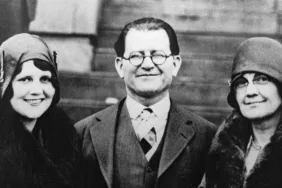Oscar winners Larry McMurtry and Diana Ossana (Brokeback Mountain) are writing The Color of Lightning for Ridley Scott to direct at 20th Century Fox and are in a deal to adapt the S.C. Gwynne book “Empire of the Summer Moon” for Warner Bros. Pictures. “Summer Moon” will be directed by Scott Cooper (Crazy Heart).
Harper Collins describes Paulette Jiles’ book “The Color of Lightning” as follows:
In 1863, the War Between the States creeps slowly yet inevitably toward its bloody conclusionand eastern thoughts are already turning to different wars and enemies.
Searching for a life and future, former Kentucky slave Britt Johnson is venturing west into unknown territory with his wife, Mary, and their three childrenwary but undeterred by sobering tales of atrocities inflicted upon those who trespass against the Comanche and the Kiowa. Settling on the Texas plains, the Johnson family hopes to build on the dreams that carried them from the Confederate South to this new land of possibilitydreams that are abruptly shattered by a brutal Indian raid upon the settlement while Britt is away establishing a business. Returning to face the unthinkablehis friends and neighbors slain or captured, his eldest son dead, his beloved Mary severely damaged and enslaved, and his remaining children absorbed into an alien society that will never relinquish its hold on themthe heartsick freedman vows not to rest until his family is whole again.
Samuel Hammond follows a different road west. A Quaker whose fortune is destroyed by a capricious act of an inscrutable God, he has resigned himself to the role the Deity has chosen for him. As a new agent for the Office of Indian Affairs, it is Hammond’s goal to ferret out corruption and win justice for the noble natives now in his charge. But the proud, stubborn people refuse to cease their raids, free their prisoners, and accept the farming implements and lifestyle the white man would foist upon them, adding fuel to smoldering tensions that threaten to turn a man of peace, faith, and reason onto a course of terrible retribution.

Simon & Schuster describes “Empire of the Summer Moon” as follows:
In the tradition of Bury My Heart at Wounded Knee, a stunningly vivid historical account of the forty-year battle between Comanche Indians and white settlers for control of the American West, centering on Quanah, the greatest Comanche chief of them all.
S. C. Gwynne’s Empire of the Summer Moon spans two astonishing stories. The first traces the rise and fall of the Comanches, the most powerful Indian tribe in American history. The second entails one of the most remarkable narratives ever to come out of the Old West: the epic saga of the pioneer woman Cynthia Ann Parker and her mixed-blood son Quanah, who became the last and greatest chief of the Comanches.
Although readers may be more familiar with the tribal names Apache and Sioux, it was in fact the legendary fighting ability of the Comanches that determined just how and when the American West opened up. Comanche boys became adept bareback riders by age six; full Comanche braves were considered the best horsemen who ever rode. They were so masterful at war and so skillful with their arrows and lances that they stopped the northern drive of colonial Spain from Mexico and halted the French expansion westward from Louisiana. White settlers arriving in Texas from the eastern United States were surprised to find the frontier being rolled backward by Comanches incensed by the invasion of their tribal lands. So effective were the Comanches that they forced the creation of the Texas Rangers and account for the advent of the new weapon specifically designed to fight them: the six-gun.
The war with the Comanches lasted four decades, in effect holding up the development of the new American nation. Gwynne’s exhilarating account delivers a sweeping narrative that encompasses Spanish colonialism, the Civil War, the destruction of the buffalo herds, and the arrival of the railroadsa historical feast for anyone interested in how the United States came into being.
Against this backdrop Gwynne presents the compelling drama of Cynthia Ann Parker, a lovely nine-year-old girl with cornflower-blue eyes who was kidnapped by Comanches from the far Texas frontier in 1836. She grew to love her captors and became infamous as the “White Squaw” who refused to return until her tragic capture by Texas Rangers in 1860. More famous still was her son Quanah, a warrior who was never defeated and whose guerrilla wars in the Texas Panhandle made him a legend.









